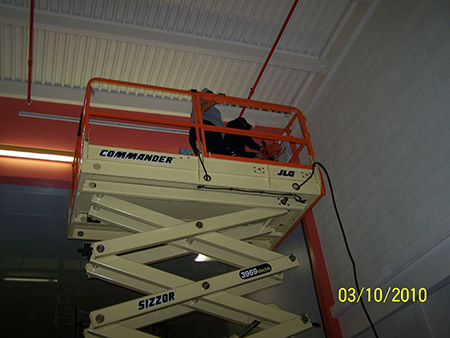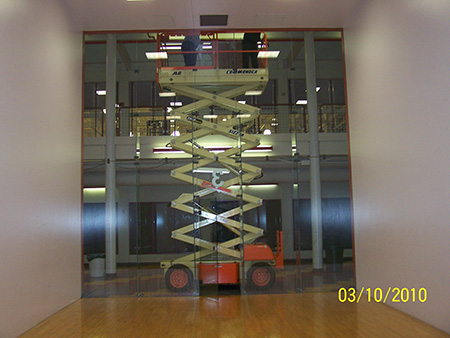« Return to FMDAA entries

Western Michigan University
CATEGORY: Financial
Western Michigan University
Overview
Western Michigan University is a multi-campus university containing 54 general fund buildings on its Kalamazoo, Michigan, campus. Prior to 2010, the custodial employees were responsible for light bulb changing along with their custodial cleaning duties. Because cleaning was the first priority, many times the custodians were not able to change light bulbs in a timely manner. Additionally, if the custodial crew encountered other issues such faulty ballast, there was a cumbersome process to notify maintenance employee to address the problem. Many times the lights bulb replacement defaulted to the electricians. In 2010 the Maintenance Services unit and the Building Custodial and Support Services unit collaborated and combined resources to launch the Light Bulb Sustainability Program.
The purpose of the light bulb sustainability program is to create more efficient use of human resources by designating specific custodial employees to work on changing out light bulbs. The Light Bulb Crew employed two M-4 project specialists resolve light bulb replacement only in the General Fund buildings on campus. This helps to create efficient use of time management and resources. Hiring M-4 project specialists costs $16.81 per hour compared to a ST2 electrician which cost $22.88.
Two custodial employees formed the light bulb crew along with assistance from zone maintenance electricians who provided technical assistance. Additionally, each building now had a designated area for light bulb equipment storage allowing for the crew to inventory and manage the equipment they needed for each building.
This program was initiated into multiple phases. The initial period of the pilot program (1/10 through 4/10); the Light Bulb Crew was called to respond and resolve close to three hundred service requests in fourteen General Fund buildings. This helped to free up work hours for electrician employees who previously had to change light bulbs. The second phase of this program was implemented in May 2010 through August 2010. They were called to address close to five hundred service requests through this span of time. As of May 2013 they have addressed over four thousand service requests on campus.
Between 2010 and 2013, the Light Bulb Sustainability Program grew to include four custodians covering all 54 buildings covering approximately 4.8M square feet of campus
Although the program addressed the issue of who has the responsibility and who had the expertise to change and repair light bulbs, it did not address all the issues. There are many areas on campus that are difficult to access, e.g., tiered lecture halls, sports venues, recreation centers, high ceilinged hallways. To change one light bulb in those areas required taking the whole area off line to users so that scaffolding or lifts could be used to change the bulbs.
So in 2013 the program took one step further. The Maintenance Time Reminder System was born. Assuming that the lifetime of a light bulb is 15,000 hours, existing occupancy sensors were utilized as hour meters in rooms that reported to the Building Automation System. When the light bulbs reached 70 to 80 percent usage, the BAS notified the Light Bulb Sustainability Program crew that the bulbs needed to be changed. Bulbs are then changed in a mass re-lamping procedure during less disruptive times, such as break times or summer sessions when less students are on campus.
This particular course of action was taken to change the approach of the light bulb replacement process. This helped to change this from a reactive process to a proactive approach by implementing the Light Bulb Crew. The proactive approach to light bulb replacement takes the issue of replacing bulbs and adds the element of high customer satisfaction. This changed the way that WMU worked to maintain lighting throughout buildings on campus.
As of 2014 the Light Bulb Crew sustains lighting in all fifty-four buildings maintained by custodial services this results in changing around 250,000 lamps on campus
The main outcomes of the light bulb sustainably program was that the Light Bulb Crew developed a stronger, more functional, and essential, intra-unit collaboration with the Facilities Management Department. This aided in moving beyond problem identification to adopt a process driven approach to focus on the solution to issues.
In-house Participants
Anand Sankey
Jeff Carr
Steve Macomber
Additional Information
Work Orders Per Year (PDF)


↑ Back to top










